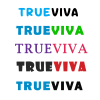The Importance of Understanding Market Rates
Setting the right price for your services is one of the biggest challenges freelancers and independent professionals face. Understanding market rates ensures you remain competitive while getting paid what you're worth.
At FreelancerBridge, we believe that knowing industry-standard rates helps freelancers negotiate confidently, attract quality clients, and build a sustainable business. In this guide, we’ll explore the importance of understanding market rates and how you can determine the best pricing for your skills and services.
Long Description
1. What Are Market Rates & Why Do They Matter?
Market rates refer to the standard pricing for a specific service within an industry. These rates vary based on experience, industry demand, location, and specialization.
🔹 Why Market Rates Matter for Freelancers:
✔ Avoid Undervaluing Yourself – Charge what your skills are worth.
✔ Stay Competitive – Avoid overpricing and losing clients.
✔ Negotiate with Confidence – Back your pricing with industry data.
✔ Attract Quality Clients – Set professional rates to filter out low-paying clients.
Freelancers who research market rates are better equipped to price their services fairly while maximizing earnings.
2. Factors That Influence Market Rates
Understanding the different factors that influence market rates will help you determine the best pricing strategy.
✅ Industry & Niche
Popular industries (tech, finance, healthcare) often pay higher rates.
Specialized skills (UX/UI design, AI writing, SEO strategy) command premium pricing.
✅ Experience Level
Beginners (0-2 years): Lower rates due to lack of portfolio.
Intermediate (3-5 years): Competitive pricing based on proven experience.
Experts (5+ years): High-value pricing for expertise and results.
✅ Project Complexity
Simple tasks (e.g., basic blog writing) have lower rates.
High-level projects (e.g., software development, branding strategy) require premium rates.
✅ Client Budget & Business Size
Small businesses may have limited budgets.
Corporations & startups often pay more for specialized services.
✅ Geographical Location
Freelancers from North America & Western Europe tend to charge higher rates.
Asia, Africa, & Eastern Europe have different pricing structures based on local economies.
By analyzing these factors, freelancers can position themselves within a competitive price range.
3. How to Research & Determine Market Rates
Follow these steps to research and set your rates competitively:
✅ Step 1: Analyze Industry Reports & Salary Surveys
✔ Check platforms like Glassdoor, Payscale, and Upwork’s freelancer rate reports.
✔ Review freelance job boards (Fiverr, PeoplePerHour, Toptal) for pricing trends.
💡 Pro Tip: Compare hourly vs. project-based rates to see what works best for you.
✅ Step 2: Compare Freelancers in Your Niche
✔ Research competitors’ pricing on LinkedIn, Upwork, and Behance.
✔ Analyze what similar professionals charge for different experience levels.
💡 Freelancer Tip: Use Twitter & Reddit forums to see discussions on fair pricing.
✅ Step 3: Test & Adjust Your Rates Over Time
✔ Start with competitive pricing and adjust based on client demand & feedback.
✔ Offer value-based pricing – charge more for high-impact projects.
💡 Example:
Basic Logo Design: $150
Premium Branding Package: $800-$2000
Setting tiered pricing helps clients choose options that fit their budget.
4. Common Pricing Models for Freelancers
Freelancers use different pricing structures based on their work style and industry.
🔹 Hourly Rates – Ideal for ongoing projects (e.g., consulting, development).
🔹 Project-Based Rates – Best for fixed deliverables (e.g., web design, content writing).
🔹 Retainer Pricing – Monthly payments for long-term clients.
🔹 Value-Based Pricing – Charge based on the impact and ROI of your work.
💡 Which model is best? If your work is highly specialized, value-based pricing is the most profitable.
5. How to Negotiate Higher Rates with Clients
Many freelancers struggle with clients asking for lower rates. Here’s how to confidently negotiate better pricing:
✔ Know Your Value – Highlight past successes and expertise.
✔ Showcase Testimonials & Case Studies – Social proof increases trust.
✔ Offer Tiered Packages – Provide multiple pricing options.
✔ Communicate ROI Clearly – Explain how your service benefits the client.
✔ Be Ready to Walk Away – Don’t accept low-paying offers.
💡 Freelancer Tip: Say:
"Based on my experience and market trends, my rate is [$X]. Clients working with me get [benefits]. Let me know if this fits your budget."
6. Tools to Help You Set Competitive Rates
Using the right tools can simplify pricing decisions.
✔ Bonsai & FreshBooks – Helps with pricing estimates & invoicing.
✔ Freelance Rate Calculators – Found on Upwork, Fiverr, and Glassdoor.
✔ Toggl Track – Tracks time spent on projects to optimize rates.
These tools help ensure profitability and prevent underpricing your work.
7. Avoiding Common Pricing Mistakes
🔴 Underpricing Services – Leads to burnout and low earnings.
🔴 Ignoring Overhead Costs – Factor in expenses (software, taxes, admin work).
🔴 Not Raising Rates Over Time – Increase rates as your experience grows.
🔴 Offering Discounts Too Often – Devalues your expertise.
Avoiding these mistakes ensures financial stability in freelancing.
Final Thoughts
Understanding market rates is essential for freelancing success. By researching industry trends, comparing competitor rates, and setting clear pricing strategies, freelancers can attract high-paying clients and grow their careers.
At FreelancerBridge, we help freelancers build profitable businesses by offering the right tools and knowledge to navigate pricing effectively.
🚀 Take control of your rates and charge what you’re worth today!


 by Emily
by Emily




